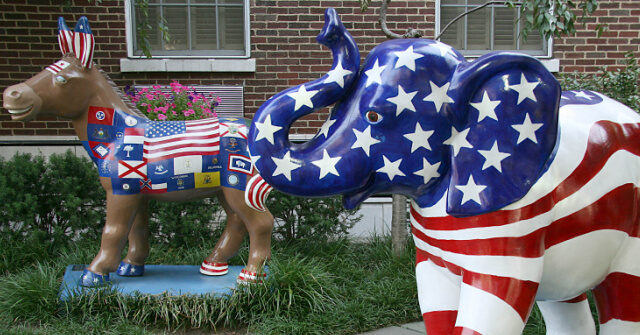Recent Gallup polling data indicates a noteworthy shift in American political alignment, with more citizens identifying as Republicans or leaning towards the GOP compared to those who identify as Democrats. In the latest survey, 31 percent of respondents identified as Republicans, while 28 percent identified as Democrats, and a significant 41 percent considered themselves independents. When independents were asked which party they leaned towards, a substantial 49 percent of all respondents either identified with the Republican Party or showed a preference for it, as opposed to 42 percent who identified with or leaned towards the Democrats. This shift gives Republicans a seven-point advantage over Democrats regarding party affiliation.
This change marks a significant trend toward Republican alignment, particularly as it represents an 11-point swing from the previous month. The Gallup poll conducted in September had shown a Democratic advantage, with 49 percent identifying as Democrats compared to 45 percent for Republicans. The recent survey, conducted in early October, indicates a marked reversal, suggesting a changing political landscape just ahead of upcoming elections. The increase in Republican identification and the decrease in Democratic alignment illustrate a volatility in public opinion that can influence future electoral outcomes.
When examining longer-term trends, the data reveals that Republicans are in a more favorable position than they were during the last presidential election cycle in October 2020. At that time, only 45 percent of respondents identified with or leaned towards the Republican Party, while 49 percent reported leaning Democratic. Similarly, a comparison with October 2016 shows that Republicans have made gains since then as well, moving from a position where only 40 percent identified or leaned Republican to the current 49 percent. This shift serves as an indicator of changing voter sentiments and the potential for increased GOP support moving forward.
Moreover, prior to probing independents on their party leanings, the identification numbers for the parties were nearly equal, with 31 percent identifying as Republicans and 31 percent as Democrats in October 2020. The results indicated a tightening race between the two primary parties, which had implications for electoral strategies at that time. By contrast, recent findings suggest that independent voters may be gravitating more towards Republicans, which could signal changes in voter bases and campaign tactics for both parties as they look towards future contests.
The trend is further underscored by inter-election comparisons, with Democrats leading Republicans by four points in October 2016—a period that also reflected a more evenly divided political landscape. Those earlier figures showed Democrats enjoying a slight edge, emphasizing how the current polling illustrates a dramatic realignment in party affiliation over recent years. The data suggests that shifts in public opinion can lead to significant electoral impacts, positioning Republicans more favorably as they appeal to an electorate that has shown clear signs of change.
Gallup’s analysis of party identification is crucial for understanding the dynamics of American politics as the nation approaches key elections. The latest data, gathered between October 1-12, hints at the potential for a more Republican-friendly electorate compared to previous months and years.While the specific sample size and margin of error remain undisclosed, the clear trend towards Republican identification indicates a critical moment in political alignment that could carry significant implications for both parties as they approach the challenges of upcoming electoral races.

